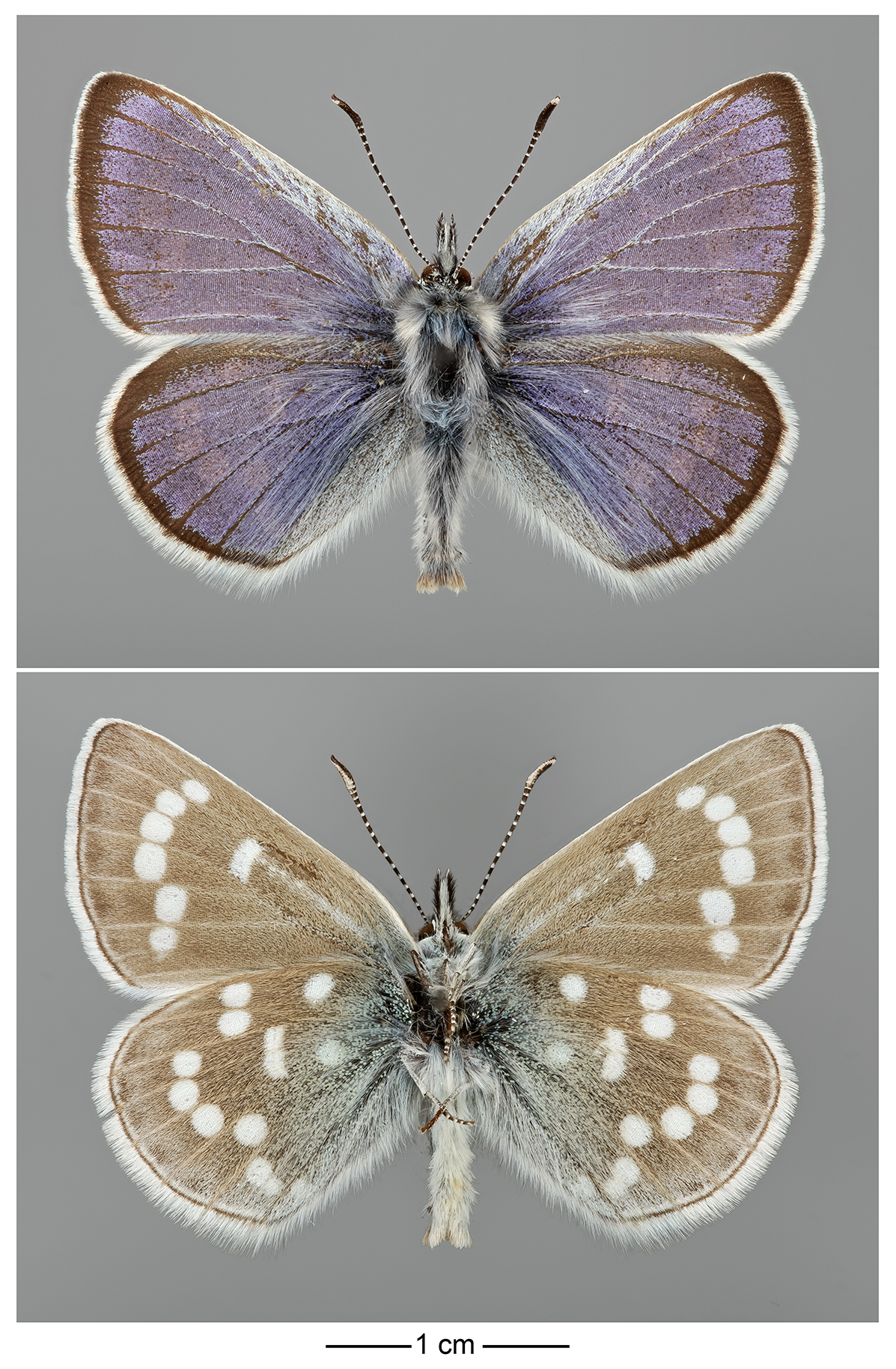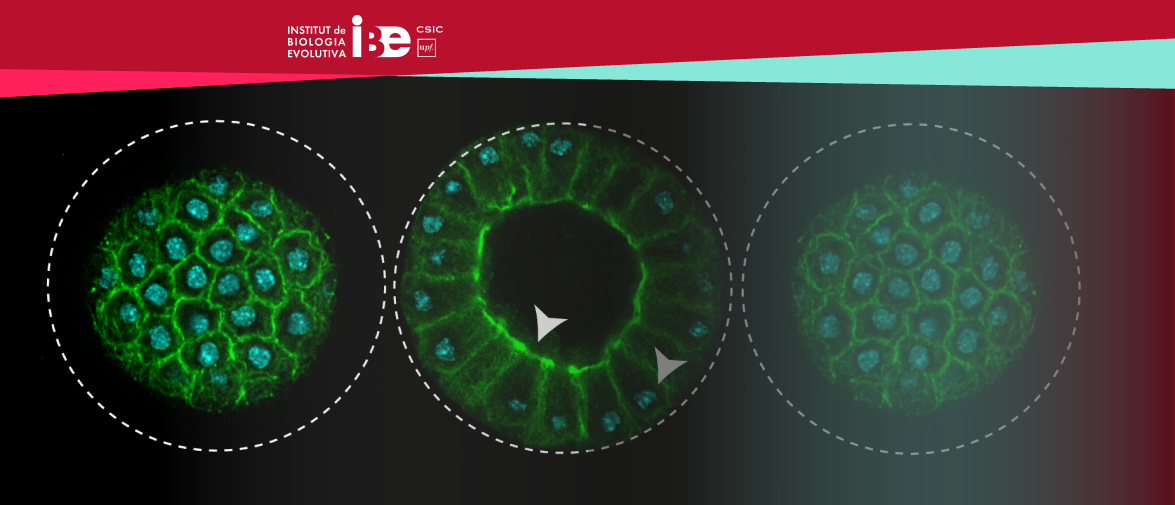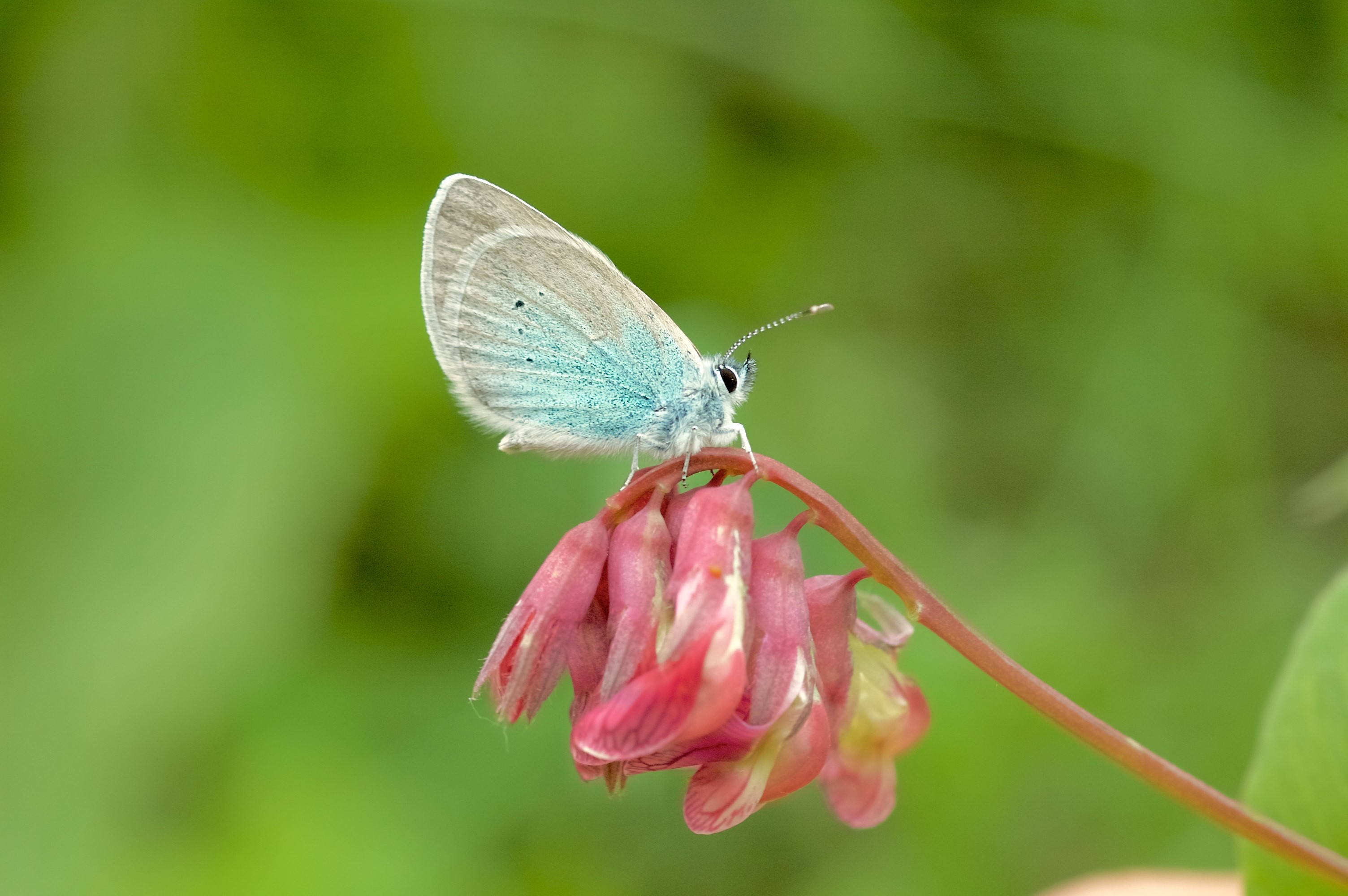Seqüenciat el genoma de la papallona Xerces Blue, una icona de l'extinció causada pels humans
Els patrons genètics trobats podrien servir per a identificar altres insectes en perill d'extinció

L'estudi, liderat per investigadors de l'Institut de Biologia Evolutiva (IBE, CSIC-UPF), i del Museu de Ciències Naturals de Barcelona, ha aconseguit seqüenciar el genoma complet de la papallona Xerces Blue, la primera papallona a extingir-se en temps històrics.Aquesta recerca ha recuperat, per primera vegada, el genoma d'un insecte extint, el qual podria facilitar el procés de desextinció d'aquesta espècie en un futur.
La papallona Xerces Blue (Glaucopsyche xerces) era originària de les dunes costaneres de San Francisco, als Estats Units. Amb el creixement de la ciutat es va destruir gran part del seu hàbitat i la seva població va quedar relegada al parc nacional del Golden Gate. Les seves ales eren d'un color blau iridescent intens, amb unes taques blanques característiques en la part ventral. Els últims espècimens de la seva espècie van ser trobats en 1941 per l’entomòleg W. Harry Lange. Es considera la primera espècie d'insecte extingida en temps històrics. La seva desaparició l'ha convertit en una icona mundial de l'extinció induïda pels humans fins al punt que dona nom a una famosa associació conservacionista nord-americana, la Xerces Society.
Un estudi previ de 2022 va recuperar l'ADN mitocondrial d'un espècimen de papallona Xerces i el va comparar amb el de la papallona Silvery Blue (Glaucopsyche lygdamus), el seu parent viu més pròxim, la qual cosa va confirmar que efectivament eren espècies diferents i no només poblacions diferents.
La recerca, liderada per Carles Lalueza-Fox, director del MCNB i investigador de l'IBE (CSIC-UPF) i Roger Vila, investigador de l'IBE (CSIC-UPF), amb la participació de Tomàs Marquès-Bonet, Investigador ICREA del Departament de Medicina i Ciències de la Vida (MELIS) de la Universitat Pompeu Fabra i l'IBE i Catedràtic de la mateixa universitat i publicada en eLife, ha aconseguit seqüenciar el genoma de 4 papallones Xerces Blue i 7 exemplars de Silvery Blue d'entre 80 i 100 anys d'antiguitat, procedents del Smithsonian Institution a Washington.
Els investigadors han pogut inferir que totes dues espècies es van separar entre un i dos milions d'anys enrere, i que constituïen dos llinatges evolutius diferents.
La comparació del genoma de totes dues espècies va revelar que l'ADN de la papallona Xerces Blue contenia una alta incidència d'endogàmia, un senyal de disminució de la població que podria utilitzar-se per a identificar altres espècies d'insectes amenaçades per l'activitat humana i els patrons d'extinció de la qual, al contrari del que ocorre amb els vertebrats, no es coneixen bé actualment. A més, també podria facilitar el camí cap a la desextinció d'aquesta popular papallona, un projecte que desperta l'interès de la comunitat científica des de fa anys.

Imatge d'un exemplar mascle de Xerces Blue, cortesia de Smithsonian Institution.
El genoma de Xerces Blue revela la història de la seva extinció
Els resultats de la recerca indiquen que la papallona Xerces Blue va experimentar un gran declivi demogràfic durant desenes de milers d'anys, probablement causat per canvis en els factors climàtics que no van afectar la Silvery Blue. La destrucció del seu hàbitat per part dels humans, no obstant això, seria el desencadenant de la seva extinció final.
L'estudi així ho conclou després de detectar en el seu genoma els trets propis d'una població reduïda, entre els quals s'inclouen una diversitat genètica escassa, llargs fragments cromosòmics sense variació genètica i una elevada freqüència d'al·lels deleteris, que perjudicaven la viabilitat dels individus i la convertien en el que avui denominaríem una espècie vulnerable.
Els trets genòmics trobats podrien salvar a altres insectes en perill
La papallona Xerces Blue es una icona de l'extinció d'insectes a tot el món. Ara el seu genoma podria ajudar a prevenir l'extinció d'altres insectes en perill, els quals pateixen un fort declivi demogràfic que pot no resultar evident.
“Detectar espècies de mamífers en perill d’extinció és més fàcil, perquè en molts casos és possible comptar els individus”, explica Roger Vila, Investigador de l'IBE (CSIC-UPF), que ha coliderat la recerca. “Hi ha molts insectes en perill d'extinció, però, la situació dels quals passa desapercebuda perquè és extremadament difícil censar les seves poblacions, que en general ens semblen molt abundants. No obstant això, poden ser molt sensibles a les variacions del clima i l'acció humana, per exemple als pesticides. Per aquest motiu, creiem que els trets genòmics que assenyalen la reducció de la població de la papallona Xerces podrien servir d'alerta a l'actualitat i ajudar a detectar insectes vulnerables en futurs estudis.”
Imatges de Glaucopsyche alexis, espècie europea més propera a Xerces Blue (Glaucopsyche xerces). Crèdit a Roger Vila.
Conèixer el genoma complet és el primer pas cap a la desextinció
La desaparició d'insectes, especialment els pol·linitzadors, és un problema ecològic molt greu a nivell mundial. Per això, la desextinció d'espècies com la papallona Xerces Blue, mitjançant tècniques d'enginyeria genètica basades en CRISPR, és de gran interès per a la comunitat científica.
“La papallona Xerces Blue és una excel·lent candidata a la desextinció perquè es tracta d'un insecte que va desaparèixer fa relativament poc, per la qual cosa es redueix l'impacte ecològic de la seva reaparició, i no implica risc de plagues o sobre creixement pel temps limitat d'aparició dels adults (entre març i abril) i per la seva especialització ecològica. Per això esperem que disposar del seu genoma complet pugui ajudar a la seva desextinció en futures iniciatives.” Assenyala Carles Lalueza-Fox, investigador de l'IBE (CSIC-UPF) i director del Museu de Ciències Naturals de Barcelona, que ha coliderat l'estudi.
Article de referència: Toni de-Dios 1,2+, Claudia Fontsere 1,3+, Pere Renom 1+, Josefin Stiller 3, Laia Llovera1, Marcela Uliano-Silva4, Alejandro Sánchez-Gracia5, Charlotte Wright4, Esther Lizano 1,6, Berta Caballero7, Arcadi Navarro 1,8, Sergi Civit 9, Robert K. Robbins10, Mark Blaxter4, Tomàs Marquès-Bonet 1,6,8,11*, Roger Vila 1*, Carles Lalueza-Fox 1,7* Whole-genomes from the extinct Xerces Blue butterfly can help identify declining insect species. eLife. 2023. DOI: https://doi.org/10.1101/2021.11.08.467457























